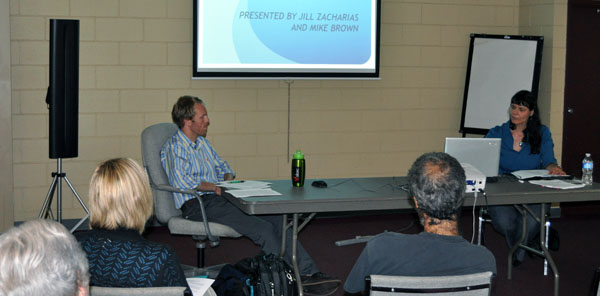
By David F. Rooney
With an estimated 32 per cent of Revelstokians living at or below the poverty line a Poverty Reduction Strategy is being developed to address poverty’s effects on individual families and the community in general.
“What we’re talking about here is not just how poverty affects people’s needs but how it affects the community at large,” Jill Zacharias, the City’s Social Development Coordinator said at a public meeting Monday evening.
She said that, according to data she acquired, 1,200 households “or 32 per cent of Revelstoke residents are at or below earning enough income to meet their basic needs.”
That seems like a remarkable number and almost a difficult to believe one, given what we think we know about the place we live in.
“Revelstoke has been consistently identified as one of the Top 10 places to live In BC, using a wide variety of socio-economic indicators,” Zacharias and strategy co-author Mike Brown said in its executive summary. “The community works hard to maintain a diverse economic base, with the tourism sector gaining momentum as Revelstoke Mountain Resort continues to grow. Large projects, like the installation of new turbines at BC Hydro’s Revelstoke and Mica dams, and the construction of a new high school and elementary school, provide jobs and economic benefits to the community. Socially, there is strong early childhood development and family literacy support, a dynamic school district, and a diversity of community-based organizations serving a variety of needs. Demographically, as well as an increasing number of people moving into retirement, there is an influx of younger residents drawn by an accessible outdoor recreation lifestyle.”
Using data from tax files, the Community Connections Food Banks’ annual Hunger Count, rental accommodation data and personal interviews, Brown, Zacharias and members of the project steering committee — Cathy Girling, Lauren Goss, Kathy Guptell, Karilyn Kempton, Sharon Kohlman, Jane McNab, Janet Pearson and Travis Wilkins — put together as clear a picture as they could of the single people, couples and families impacted by poverty. They looked at the affordability of, not just rent, but food and clothing, too. It was a Herculean task.
The strategy outlines all of this and includes numerous recommendations that, if taken together, could alleviate social and economic inequality and their effects on adults and children. Some of the more than 40 recommended actions can be taken by the City government on its own. Others would require work through the Union of British Columbia Municipalities and still others through a multi-sector poverty coalition, Interior Health and other agencies.
Whether all — or, indeed, any — of the recommendations are translated into action remains to be seen but this strategy is a clear map towards one possible future. Whether we, as a community, wish to travel towards that goal is a matter for serious discussion.
Please click here to read the full Draft Poverty Reduction Strategy.



